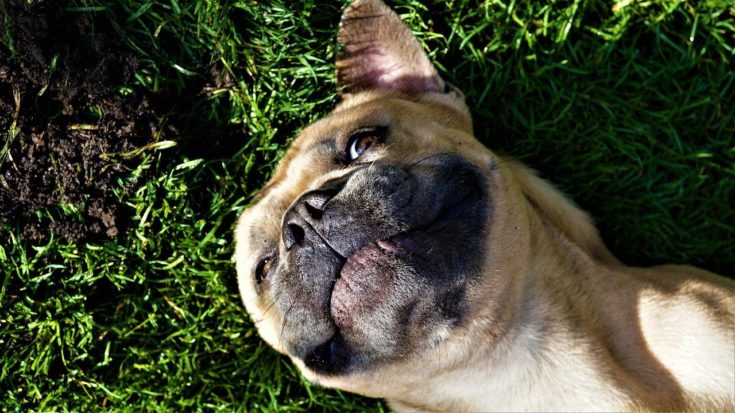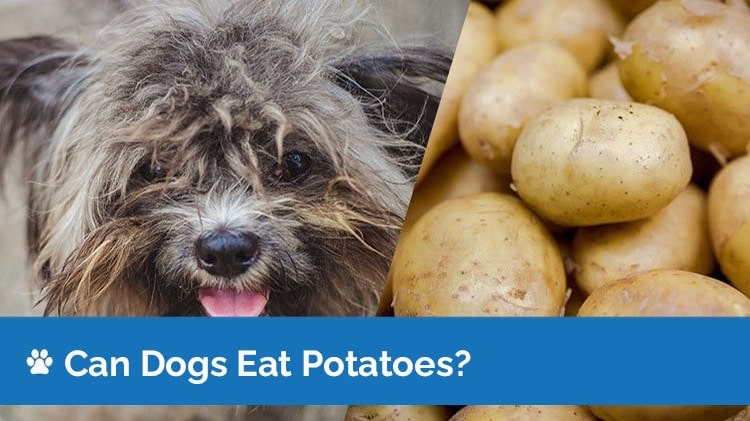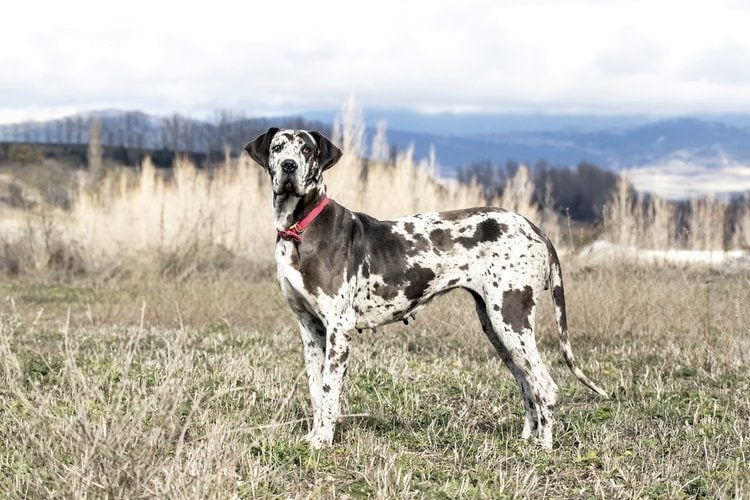Merle Poodle: Facts, Origin & History (With Pictures)
By Jordyn Alger
Updated on
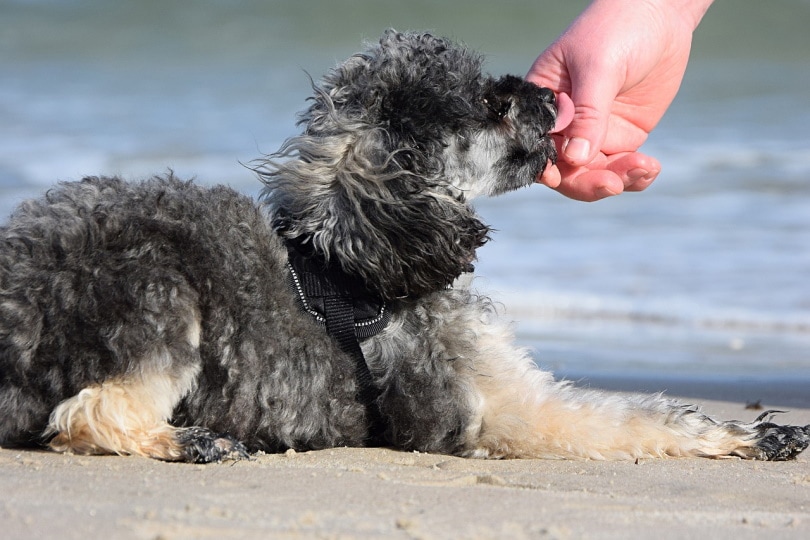
Click to Skip Ahead
Poodles are fascinating dogs. From their unique coats to incredible intelligence, these dogs are among the most beloved breeds. In fact, the poodle is so coveted in France that it has been awarded the title of the country’s national dog.
Breed Overview
| Height: | 15 inches and over |
| Weight: | 40 – 70 pounds |
| Lifespan: | 10 – 18 years |
| Colors: | Apricot, black, blue, brown, cream, gray, red, silver, white |
| Suitable for: | Active families, large homes, multi-pet households, first-time dog owners |
| Temperament: | Lively, confident, happy, sweet, very smart |
But what about the merle poodle? Merle is a unique genetic trait in a dog’s coat that causes a speckled pattern. This is a rare condition, meaning the merle poodle is highly desired by some. If you are eager to learn more about the merle poodle, be sure to stay tuned to learn some unique facts.
Merle Poodle Characteristics
The Earliest Records of Merle Poodles in History
Around 400 years ago, the poodle breed was established. It started out in Germany as a duck hunting dog, but its appealing looks soon earned it favor with the nobles of France. Soon, it became a luxurious companion and is now associated more with high society than duck hunting.
As for when the merle gene was introduced to the poodle, there is no definitive answer. However, there are a few possibilities that are generally agreed upon.
One is that the merle gene was introduced to the poodle through another breed long ago, such as a Great Dane or an Australian Shepherd.
Another option is that the merle gene has always been a natural possibility among poodles and did not require another breed to introduce it: either as a mutation or simply a hidden gene that has always been present.
How Merle Poodles Gained Popularity
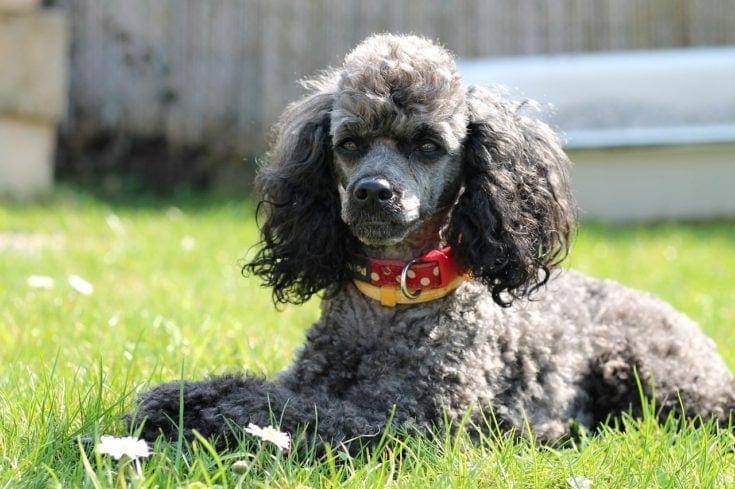
As mentioned before, the poodle started as a duck hunting breed that gradually made its way to the laps of the nobility and was later crowned the national dog of France. The poodle’s popularity has increased; in 2021, the American Kennel Club recognized it as the fifth most popular dog breed.
Although the merle poodle is coveted by many, it is still among the rarest poodle variations. Merle poodles make up only a tiny percentage of all poodles, and it’s difficult for pet owners to get their hands on their own merle poodles.
Formal Recognition of Merle Poodles
The poodle was officially recognized as a breed by the American Kennel Club in 1887. While the merle coloration is not explicitly disqualified in the breed standard, it is also not outright accepted. There is no direct mention of merle poodles in the poodle breed standard.
However, The Kennel Club in the United Kingdom does not accept merle coloration for poodles. Although the merle is not disqualified in some clubs, it is still considered ineligible for many others.
There is a controversy surrounding the existence of merle dogs. If bred improperly, merle dogs can be riddled with health defects that stunt their growth. Therefore, all merle dogs must be bred carefully and given thorough health exams before adoption.
Top 3 Unique Facts About Poodles
1. The Poodle’s Fancy Hairdo has a Purpose
The poodle’s stylish coat is renowned for its beauty, but did you know there’s more to it than its aesthetic appeal?
In the past, cutting a poodle’s coat was essential to efficient duck hunting. Reducing the coat too much would make the poodle vulnerable to the water’s cold temperatures, but keeping too much of the hair could slow it down.
So, hunters decided to cut only specific areas of the poodle’s coat, optimizing it by shaving away unnecessary parts while keeping the coat thick around the joints and upper torso.
2. Poodles Don’t have Fur—They have Hair
It may sound bizarre, but it’s true! Poodles do not have fur. Typical fur grows to a certain point before shedding off to be replaced by the next layer. Instead, poodles have hair; it never stops growing and does not shed.
Therefore, poodles require extra grooming. If their coat is not properly maintained, it can quickly get out of hand. Another interesting feature about the poodle’s hair is that, much like a human, it can grow thinner over time. Hormonal changes in poodles may lead to thinner hair, such as when a female poodle gives birth.
3. There Are Plenty of Jobs Poodles Can Do
Poodles were originally bred for duck hunting. Now, they are commonly seen as show dogs. But what else can they do? Poodles are excellent service dogs, therapy dogs, and truffle hunters. Overall, the dogs are incredibly talented and adept in many areas!
Does a Merle Poodle Make a Good Pet?
The merle poodle is beautiful, has a rich history, and is capable of many things. But is it a good family dog?
Absolutely! Poodles are known to be affectionate dogs that love their families. They are reportedly good with children and open to strangers, though they may be wary of other pets. However, a poodle will likely accept another pet if properly socialized over time.
Grooming is a huge part of caring for a poodle. If regular combing is too much trouble, a poodle can be kept in a short-trimmed coat. However, frequent upkeep will be necessary if you plan on flaunting your poodle’s gorgeous coat.
Brushing daily is vital to your poodle’s well-being, as a poodle’s coat can very quickly become matted. This can be a painful condition for your pup, and it is best to avoid it by ensuring your dog is properly groomed. It is important to brush your poodle’s coat all the way to the skin because a shallow brush can miss the roots underneath, and matting may occur.
Conclusion
The merle poodle is a rare and beautiful dog, coveted for its unique style. Even without the merle coloring, the poodle is still highly sought after for its many great qualities, such as its looks, its intelligence, and its temperament. Merle or not, the poodle makes for a great companion.
Featured Image Credit: RebeccasPictures, Pixabay



